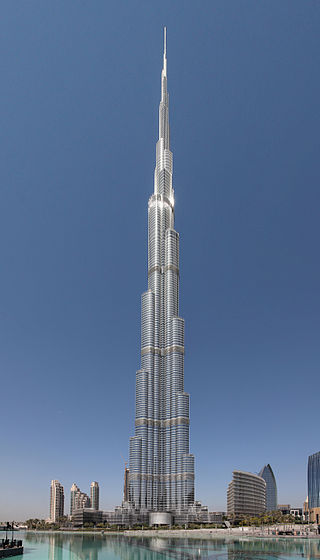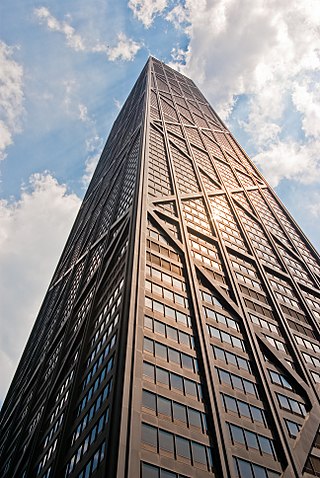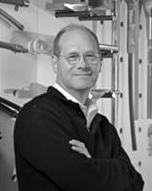Himanshu Parikh | |
|---|---|
| Born | 14-04-51 Dar-es-Salaam |
| Nationality | British |
| Occupation | Architect |
Himanshu Parikh is a leading Indian engineer. [1] [2]
Himanshu Parikh | |
|---|---|
| Born | 14-04-51 Dar-es-Salaam |
| Nationality | British |
| Occupation | Architect |
Himanshu Parikh is a leading Indian engineer. [1] [2]
Himanshu Parikh was born in Dar es Salaam, Tanzania. He graduated from Cambridge University, where he obtained both his bachelor's and master's degrees in engineering sciences with honours. He practised in Cambridge for ten years before moving to India in 1982. In India, he has done innovative work in structural engineering as well as in urban planning, environmental upgradation, and infrastructure design, with an emphasis on low-income urban and rural areas. His focus is to use water and environmental sanitation infrastructure as a principal catalyst for poverty alleviation. In structures, Mr. Parikh has developed the concept of ‘mindful buildings’ based on simplicity, frugality, and multiplicity. Currently, he spends most of his time in India on developmental work, teaching intermittently.
He established Himanshu Parikh Consulting Engineers in Ahmedabad, India, in 1982.
His practice focuses on urban planning, infrastructure design, and environmental upgrading. He developed a new concept for slum development called "Slum Networking." [3]
On the structural engineering front, his work offers an alternative paradigm to "green buildings" in order to deliver affordable and low embodied energy structures within the holistic framework of light, ventilation, and thermal comfort.
Parikh was a professor at the School of Planning, CEPT University, Ahmedabad, a visiting lecturer at the Human Settlements Management Institute in Delhi, and has taught occasionally at Martin's School of Architecture at Cambridge University. He has also presented his concepts, both in infrastructure and structures, at several international fora.

Civil engineering is a professional engineering discipline that deals with the design, construction, and maintenance of the physical and naturally built environment, including public works such as roads, bridges, canals, dams, airports, sewage systems, pipelines, structural components of buildings, and railways.

A skyscraper is a tall, continuously habitable building having multiple floors. Modern sources currently define skyscrapers as being at least 100 meters (330 ft) or 150 meters (490 ft) in height, though there is no universally accepted definition, other than being very tall high-rise buildings. Historically, the term first referred to buildings with between 10 and 20 stories when these types of buildings began to be constructed in the 1880s. Skyscrapers may host offices, hotels, residential spaces, and retail spaces.

Structural engineering is a sub-discipline of civil engineering in which structural engineers are trained to design the 'bones and joints' that create the form and shape of human-made structures. Structural engineers also must understand and calculate the stability, strength, rigidity and earthquake-susceptibility of built structures for buildings and nonbuilding structures. The structural designs are integrated with those of other designers such as architects and building services engineer and often supervise the construction of projects by contractors on site. They can also be involved in the design of machinery, medical equipment, and vehicles where structural integrity affects functioning and safety. See glossary of structural engineering.

Skidmore, Owings & Merrill LLP (SOM) is an American architectural, urban planning and engineering firm. It was founded in 1936 by Louis Skidmore and Nathaniel Owings in Chicago, Illinois. In 1939, they were joined by engineer John Merrill. The firm opened its second office, in New York City, in 1937 and has since expanded internationally, with offices in San Francisco, Los Angeles, Washington, D.C., London, Melbourne, Hong Kong, Shanghai, Seattle, and Dubai.

A slum is a highly populated urban residential area consisting of densely packed housing units of weak build quality and often associated with poverty. The infrastructure in slums is often deteriorated or incomplete, and they are primarily inhabited by impoverished people. Although slums are usually located in urban areas, in some countries they can be located in suburban areas where housing quality is low and living conditions are poor. While slums differ in size and other characteristics, most lack reliable sanitation services, supply of clean water, reliable electricity, law enforcement, and other basic services. Slum residences vary from shanty houses to professionally built dwellings which, because of poor-quality construction or lack of basic maintenance, have deteriorated.

Ahmedabad is the most populous city in the Indian state of Gujarat. It is the administrative headquarters of the Ahmedabad district and the seat of the Gujarat High Court. Ahmedabad's population of 5,570,585 makes it the fifth-most populous city in India, and the encompassing urban agglomeration population estimated at 6,357,693 is the seventh-most populous in India. Ahmedabad is located near the banks of the Sabarmati River, 25 km (16 mi) from the capital of Gujarat, Gandhinagar, also known as its twin city.

The Aga Khan Award for Architecture (AKAA) is an architectural prize established by Aga Khan IV in 1977. It aims to identify and reward architectural concepts that successfully address the needs and aspirations of Muslim societies in the fields of contemporary design, social housing, community development and improvement, restoration, reuse and area conservation, as well as landscape design and improvement of the environment.

Fazlur Rahman Khan was a Bangladeshi-American structural engineer and architect, who initiated important structural systems for skyscrapers. Considered the "father of tubular designs" for high-rises, Khan was also a pioneer in computer-aided design (CAD). He was the designer of the Sears Tower, since renamed Willis Tower, the tallest building in the world from 1973 until 1998, and the 100-story John Hancock Center.
Ken Yeang is an architect, ecologist, planner and author from Malaysia, best known for his ecological architecture and ecomasterplans that have a distinctive green aesthetic. He pioneered an ecology-based architecture, working on the theory and practice of sustainable design. The Guardian newspaper (2008) named him "one of the 50 people who could save the planet". Yeang's headquarters is in Kuala Lumpur (Malaysia) as Hamzah & Yeang, with offices in London (UK) as Llewelyn Davies Ken Yeang Ltd. and Beijing (China) as North Hamzah Yeang Architectural and Engineering Company.
Municipal or urban engineering applies the tools of science, art and engineering in an urban environment.

Balkrishna Vithaldas Doshi OAL was an Indian architect. He is an important figure in Indian architecture and noted for his contributions to the evolution of architectural discourse in India. Having worked under Le Corbusier and Louis Kahn, he was a pioneer of modernist and brutalist architecture in India.

The Ahmedabad Urban Development Authority (AUDA) is a civilian government body responsible for overseeing and sanctioning construction and infrastructure development across the suburbs of the city of Ahmedabad, in the state of Gujarat in India.

CEPT University, formerly the Centre for Environmental Planning and Technology, is an academic institution located near University Area in Ahmedabad, India offering undergraduate, postgraduate and doctoral programmes in areas of natural and developed environment of human society and related disciplines.
Slum networking is a holistic approach to improving urban infrastructure, developed by Himanshu Parikh

In structural engineering, the tube is a system where, to resist lateral loads, a building is designed to act like a hollow cylinder, cantilevered perpendicular to the ground. This system was introduced by Fazlur Rahman Khan while at the architectural firm Skidmore, Owings & Merrill (SOM), in their Chicago office. The first example of the tube's use is the 43-story Khan-designed DeWitt-Chestnut Apartment Building, since renamed Plaza on DeWitt, in Chicago, Illinois, finished in 1966.

William Frazier Baker is an American structural engineer known for engineering the Burj Khalifa, the world's tallest building/man-made structure and a number of other well known buildings. He is currently a structural engineering partner in the Chicago office of Skidmore, Owings & Merrill, LLP (SOM).

Architecture is the art and technique of designing and building, as distinguished from the skills associated with construction. It is both the process and the product of sketching, conceiving, planning, designing, and constructing buildings or other structures. The term comes from Latin architectura; from Ancient Greek ἀρχιτέκτων (arkhitéktōn) 'architect'; from ἀρχι- (arkhi-) 'chief', and τέκτων (téktōn) 'creator'. Architectural works, in the material form of buildings, are often perceived as cultural symbols and as works of art. Historical civilizations are often identified with their surviving architectural achievements.
Shirish B Patel, is an Indian Civil Engineer and the founder of Shirish Patel & Associates (SPA), a company which designs, manages and inspects structural engineering projects. Patel is a writer and speaker in the media on the topic of urban planning and urban density.
Dr. Lynn S. Beedle was an American structural engineer, the founder and the director of the Council on Tall Buildings and Urban Habitat, and known for his design and building of skyscrapers. The New York Times has called him "an expert on tall buildings".

Bimal Hasmukh Patel is an architect from Ahmedabad, India, with over 35 years of professional, research and teaching experience in architecture, urban design and urban planning. He is President of CEPT University in Ahmedabad and leads HCP Design Planning and Management Private Limited, an architecture, planning and project management firm. He also founded Environmental Planning Collaborative, a not-for-profit, planning research and advocacy organization.